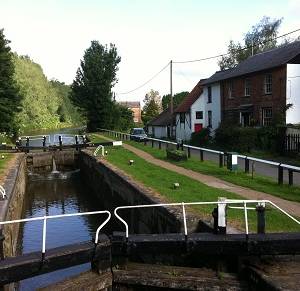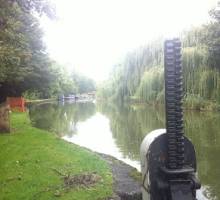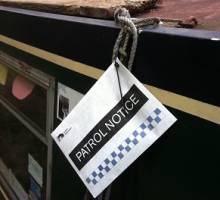
Don’t ignore these 5 simple rules of canal boating
If you’re relatively new to canal boating it can take a while to pick up the general etiquette of how to behave when you’re out and about on the waterways. A basic knowledge of the best practice on the Cut may save you considerable embarrassment, and other boaters will be only too happy to advise you when you’re not sure. These guidelines apply to the unique world of the UK canals system, and things are done differently on the rivers. Even if you’ve owned a boat for some time there may be some unwritten rules that you didn’t even know you were breaking....
Rule 1: Casting off
When moving off from your mooring don’t pull out in front of another boat! Think of how the other boat will have to suddenly slow to a stop, and how a narrowboat doesn’t really have brakes. It’s far more polite to let them go on past before leaving your mooring.
Once you’ve got going, don’t follow the boat in front too closely; give them plenty of space. A canal boat has a very long stopping distance so again, consider what would happen should the boat in front have to stop very suddenly. Also, if another boat is approaching you in the opposite direction slow down a little, particularly if the canal is quite narrow.
Rule 2: Cruise control
Keep it slow! The ‘speed limit’ on the canals is 4mph but in reality no one needs to go that fast. Look behind you. If your boat is creating a wash you’re going too fast. Slow down even more when you pass moored boats. You’ll be able to see if you’ve slowed down enough by looking at your effect on the boats as you pass them. A fast boat can really rock a moored one and upset the occupants within, at best spilling their coffee or at worst sending things flying off the shelves! You risk an angry boater peeping his head out of the roof hatch to shout at you! Don’t leave it until the last minute. Reduce your revs well in advance so that you are cruising at a considerate pace when you pass the moored boats.
Rule 3: Share the locks
Never ‘turn a lock in someone’s face’. Before setting the lock in your favour make sure no other boat is approaching from the opposite direction. If someone else is going your way sharing the lock is good practice, saves water and provides extra crew for operating the lock.
If another boat is already using the lock when you arrive the polite thing to do is to assist them in operating the lock. This is especially true if you have a crew of many, and their boat is being operated single handed.
Don’t open the gate paddles until the lock has filled enough to cover them, and if it’s not your boat in the lock, but you are assisting another boat, wait until that crew gives you the go ahead to open the paddles.
Leave the safety catch on the ratchet when winding up the paddles – you should hear a clicking sound as you wind the windlass. Always make sure the safety catch is left on before leaving the lock and always drop the paddles before leaving the lock. As you leave, you should close the gates to save water – unless you see another boat approaching. The approaching boat can then go straight in. If they don’t need the lock they should signal to show you they are mooring up.
Rule 4: No moor rules!
You shouldn’t moor on the bollards beside a lock because these are for boaters waiting to use the lock. The same goes for any bollards approaching a tunnel, bridge or swing bridge: And definitely do not moor in a winding hole! I have tried to turn a 70ft boat in a winding hole whilst avoiding the inconsiderately moored boat – it’s not funny on a windy day!
Don’t moor on the facilities such as a water point or Elsan point, unless you are using the facilities.
And finally, don’t tie your ropes across the towpath. If the ground is too hard to put a pin in near the boat you will have to find an alternative mooring. Ropes across the towpath are hazardous to both pedestrians and cyclists.
Rule 5: Take it easy
Folk-rock band The Levellers once famously sang,
“If I could choose the life I please then I would be a boatman
On the canals and the rivers free no hasty words are spoken!”
Viewing the canal from the towpath, through rose tinted glasses The Levellers had obviously never experienced ‘canal rage’! But stick to these simple rules and hopefully neither will you. The most important thing to remember about canal boating is that it’s more about enjoying the journey at a leisurely pace, than arriving at your destination. Now go out there and get yourself a reputation as a well-mannered canal boater!
You may also like:
How to buy a boat – the process / Thinking of selling your boat? / Don’t cross the Atlantic until you’ve read this! / 2013: Our amazing year! / Get started with your own Boatshed business / More news articles and stories.
See when the next boat auction is.
New here? Follow us on Facebook or Twitter to hear of new listings, and regular boating, sailing and brokerage news.






